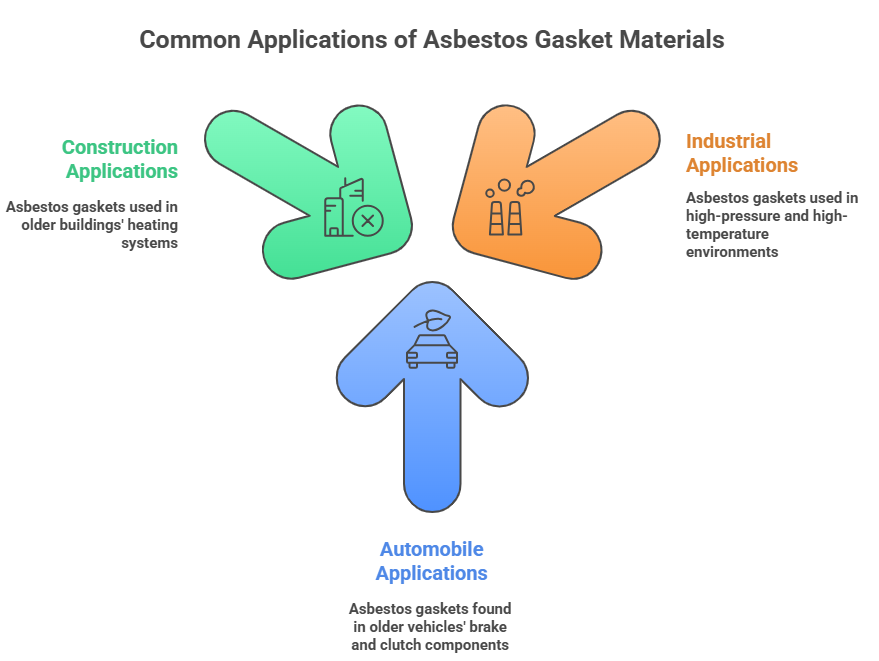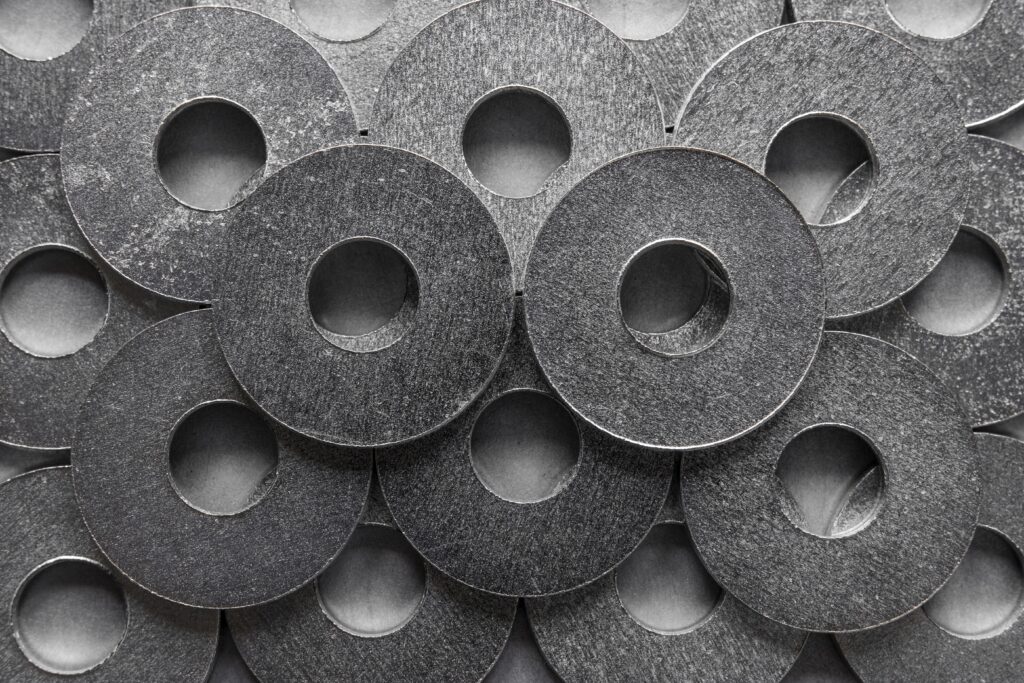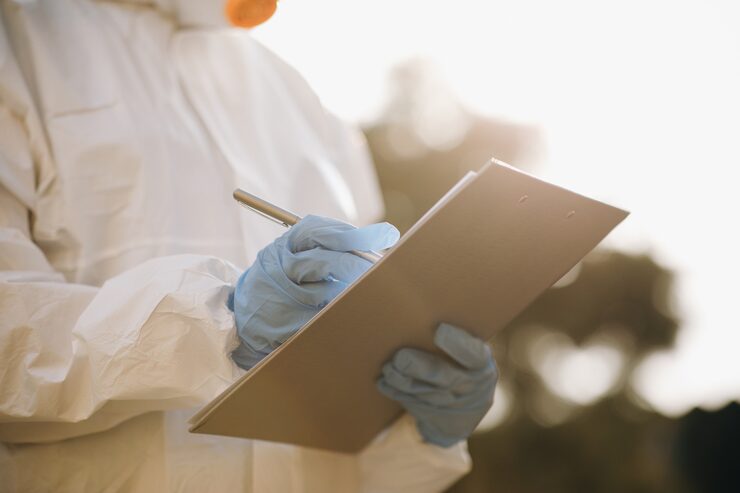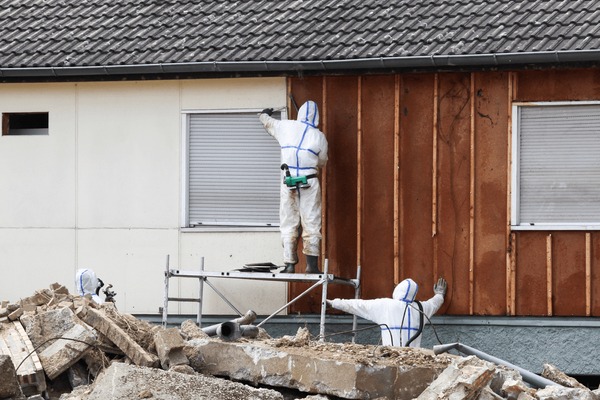Asbestos gasket materials were widely used in residential and industrial applications in the past. The production and use of asbestos itself was banned in Australia in December 2003 after its harmful health effects were clear. But old buildings and machinery still contain asbestos and related products like asbestos gaskets. To learn more about asbestos gaskets, how to spot them, and the right approach to their disposal, keep reading.
What is Asbestos Gasket Material?
An asbestos gasket is a mechanical seal composed of asbestos mineral fibres, rubber binders, and filler materials. They have industrial applications due to their exceptional sealing and heat resistance properties. An asbestos gasket sheet is used to prevent leaks in machinery. Asbestos gaskets have particular applications in machinery and equipment that are exposed to high temperature, pressure, and chemicals, such as an asbestos exhaust gasket.
Types of Asbestos Gaskets
Today, asbestos and related products are banned in Australia. But they can still be found in older machinery and automobiles. There are three types of asbestos that were used to make the gaskets. These include Chrysotile (white), Amosite (brown), and crocidolite (blue).
The Risks of Asbestos Gaskets
An asbestos gasket can pose severe health risks, especially when the asbestos fibres are disturbed and released into the air. The microscopic fibres go airborne during repair, disposal, and maintenance work. When inhaled, the fibres get trapped in the lungs and cause the following diseases.
- Mesothelioma: This is a rare and aggressive form of cancer that affects the linings of the lungs, heart, or abdomen.
- Lung Cancer: Exposure to asbestos fibres significantly increases the risk of lung cancer. This risk is even greater for smokers.
- Asbestosis: This is a progressive, chronic lung disease that results in scarring of lung tissue. As a result, you may suffer from a persistent cough, shortness of breath, and permanent lung damage.
Common Applications and Locations of Asbestos Gasket Material in Australia
Here are the common applications of asbestos gasket materials once seen in Australia. These applications will give you an idea of where you must be wary of the risk of asbestos exposure.
Industrial Applications
Asbestos gaskets were once used as an essential sealant for high-pressure and high-temperature industrial furnaces, boilers, and pipelines. The chemical and heat resistance property of asbestos gaskets also makes them useful as valve rings and for valve stem packing. The use of an asbestos gasket sheet for sealing pipes was common.
Automobile Applications
The use of asbestos was ceased by Australian automobile manufacturers in the late 80s and early 90s. Asbestos was completely banned in the country in 2003. So, asbestos gasket materials can be found in older vehicles. They were used in brake pads, brake linings, and clutch components. The older automobiles also have an asbestos cylinder head gasket.
Construction and Plumbing Applications
The use of asbestos gasket materials was also common in heater, boiler, and stove flues for their fire and heat resistance. An asbestos exhaust gasket could also be seen in furnaces.
You can also find asbestos gaskets in older buildings that were constructed or renovated before the 90s. You are more likely to find asbestos gaskets in buildings that were built around heaters and boilers.

Legal Status and Regulations Regarding Asbestos Gaskets in Australia
Here is everything you need to know about asbestos laws in Australia.
| Prohibitions and Bans | Handling and Disposal |
|---|---|
| Nationwide Ban: The manufacturing and use of asbestos and products containing it have been banned since December 2003 under the Work Health and Safety (WHS) laws. | State Control: Each Australian state or territory has specific regulations on how asbestos must be managed and disposed of. Professional handling of asbestos, including asbestos gasket materials, is required. |
| Import Ban: The import of asbestos and products containing it is banned by the Australian Border Force. | Local Authorities: Businesses and homeowners are required to contact their state environmental health officer or local government before trying to handle or dispose of asbestos materials. |
Table 1: Asbestos Laws in Australia
How to Identify Asbestos Gasket Materials
Here is how you can know if asbestos gasket materials are potentially present in a site.
Age of Building/Equipment (Visual & Unreliable)
Buildings, machines, and industrial materials of the pre-2000 era are very likely to contain asbestos. Older automobiles are also likely to contain an asbestos cylinder head gasket. However, visual clues are unreliable as asbestos fibres cannot be seen by the naked eye.
Professional Asbestos Testing (Recommended & Required)
Professional testing can help you detect the invisible airborne asbestos fibres. Small samples are collected by professionals certified on CPCCDE3014 (non-friable asbestos disposal), CPCCDE3015 (friable asbestos disposal), and CPCCDE4008 (supervise asbestos disposal).
The samples are sent for laboratory analysis, where they undergo tests like Polarised Light Microscopy (PLM), Transmission Electron Microscopy (TEM), and Phase Contrast Microscopy (PCM). The tests are done in laboratories accredited by the National Association of Testing Authorities (NATA).
DIY Identification (Risky & Prohibited)
Asbestos materials release invisible hazardous fibres into the air. These fibres can lead to severe diseases when inhaled. A greater concern is that symptoms may appear after years, when it is typically too late.
Handling asbestos yourself is not recommended and is also illegal. You may face significant fines on top of deteriorated health if you handle asbestos materials yourself or improperly.
Identifying Asbestos Gasket Material- Key Signs and Testing Methods
Here is how the different asbestos testing methods compare.
| Method | Description | Pros | Cons |
|---|---|---|---|
| Visual Inspection | Observing old buildings, machines, and industrial materials. | Fast initial check | Risks and unreliable |
| Lab Testing/ Bulk Sampling | Certified professionals collect samples and send them for analysis in accredited laboratories. | Accurate and legally required | Requires professional handling |
| Air Monitoring | Detecting airborne fibres when asbestos is disturbed. | Ensures safety during remedition | Specialised but expensive |
Table 2: Comparing Different Asbestos Detection Methods
Why You Need Professional Asbestos Gasket Remediation
Professional handling of asbestos gasket materials is required and recommended due to the health and environmental risks of improper management. The invisible needle-like fibres can stay airborne for up to 3 days. They can contaminate clothing, water, hair, skin, and surfaces. Exposure or inhalation of the fibres will cause you severe, irreversible lung issues and cancers.
Professionals are trained on proper handling and disposal. They use specialised asbestos detection techniques and clean-up equipment. They also wear protective gear and follow strict disposal guidelines. Moreover, they seal off work areas so that others are not exposed to asbestos fibres. They also contain the site appropriately to prevent the spread of the fibres.
The professionals perform a post-remediation air quality testing to ensure that the site is safe for re-entry of the occupants.
Ready to Reach Out to Professionals?
Asbestos gasket materials still remain as a hidden danger in a number of older buildings and machinery in Australia. Hence, it is important to recognise its presence along with the associated health and environmental risks. Always reach out to certified professionals if you suspect the presence of asbestos on your property. Professional handling is not just the safest option, but also a legal requirement. So, reach out to a site environmental and remediation service provider today!
Frequently Asked Questions
How Can I Tell That a Material Contains Asbestos Just by Looking or Touching?
You cannot surely tell if a material contains asbestos just by viewing or touching. Moreover, touching asbestos material can be harmful, especially if you accidentally disturb it by releasing fibres into the air. Treat visual inspection as a means to spot the need for laboratory testing.
Do Remediation Services Providers Employ Professionals Certified to Handle Asbestos?
Yes, remediation services providers can deal with asbestos safely and legally. They employ teams of certified professionals who use the right protective gear, clean-up tools, sealing techniques, and post-remediation tests to ensure your as well as their own safety.
How is Asbestos Abatement and Remediation Different?
Asbestos abatement and remediation are related, but there is one key difference. Abatement is about controlling the risk associated with the presence of asbestos. It typically involves encapsulation and isolation. Remediation is about completely disposing of asbestos and making the site hazard-free.
Is There Any Condition in Which I Should Not Worry About the Presence of Asbestos?
It is generally considered safe if asbestos material is not disturbed and is in good condition. Asbestos can be disturbed when work is being done on it or when it is damaged. In short, you are safe as long as you are not disturbing asbestos, which will release the harmful fibres that you will unknowingly inhale.





